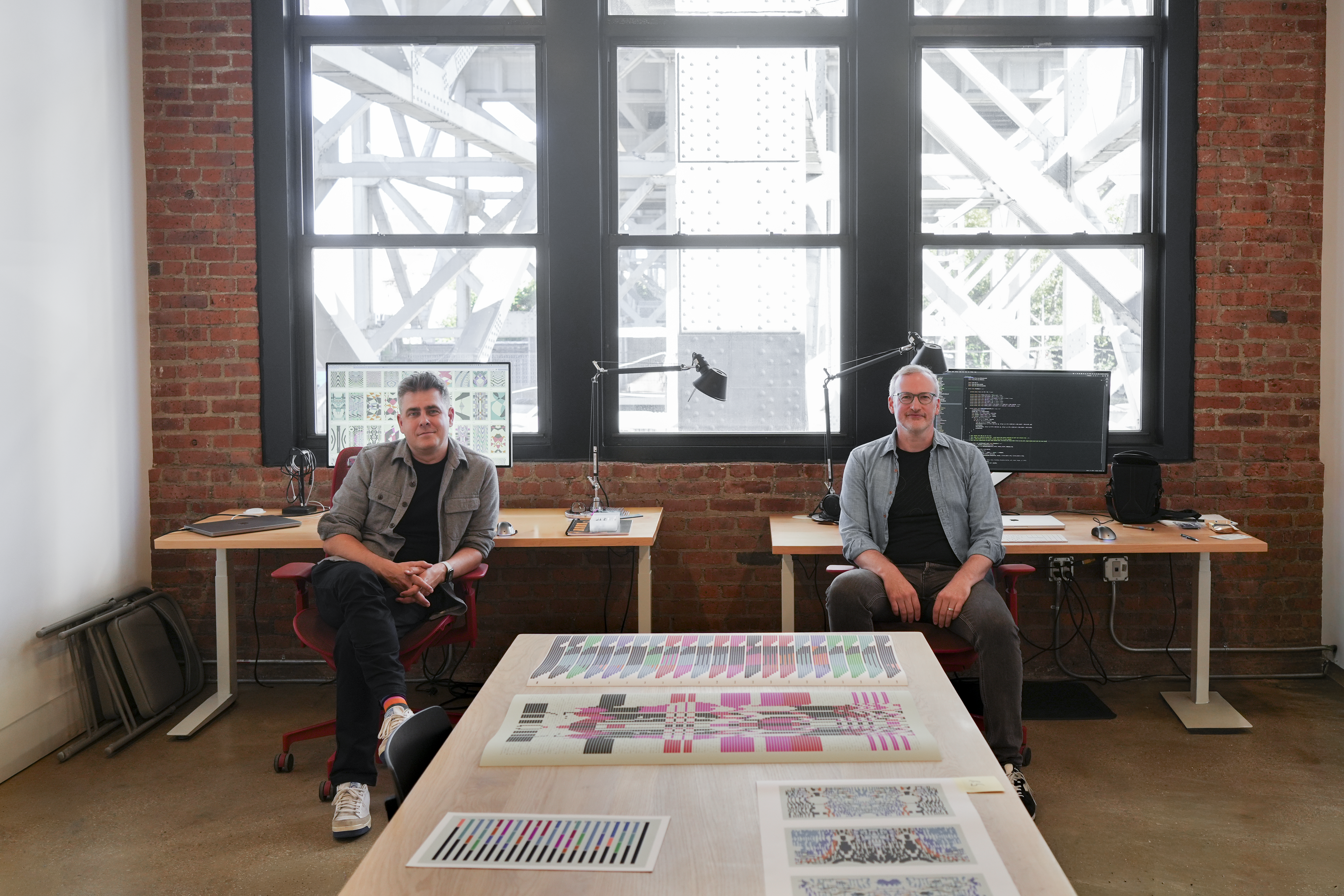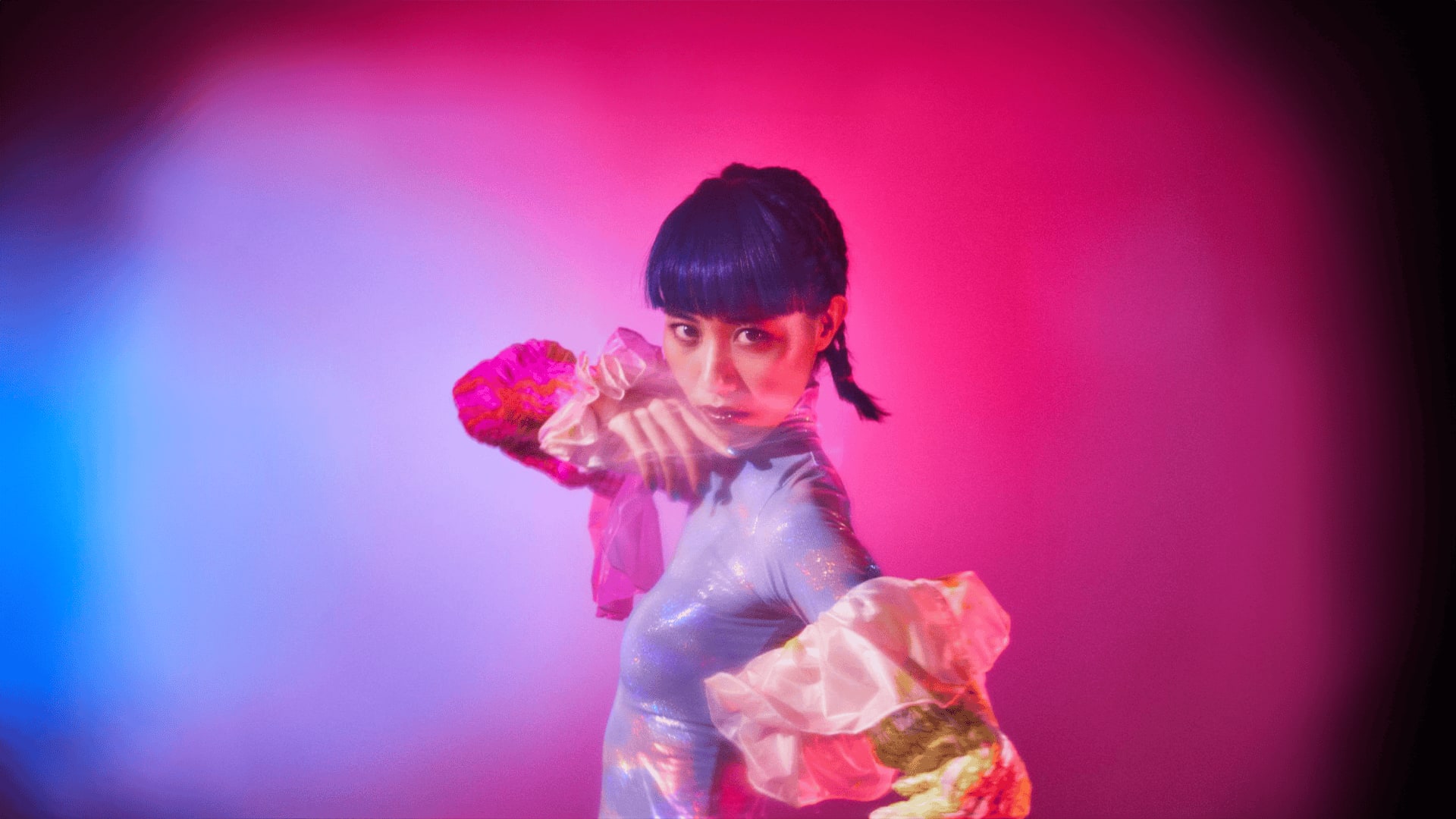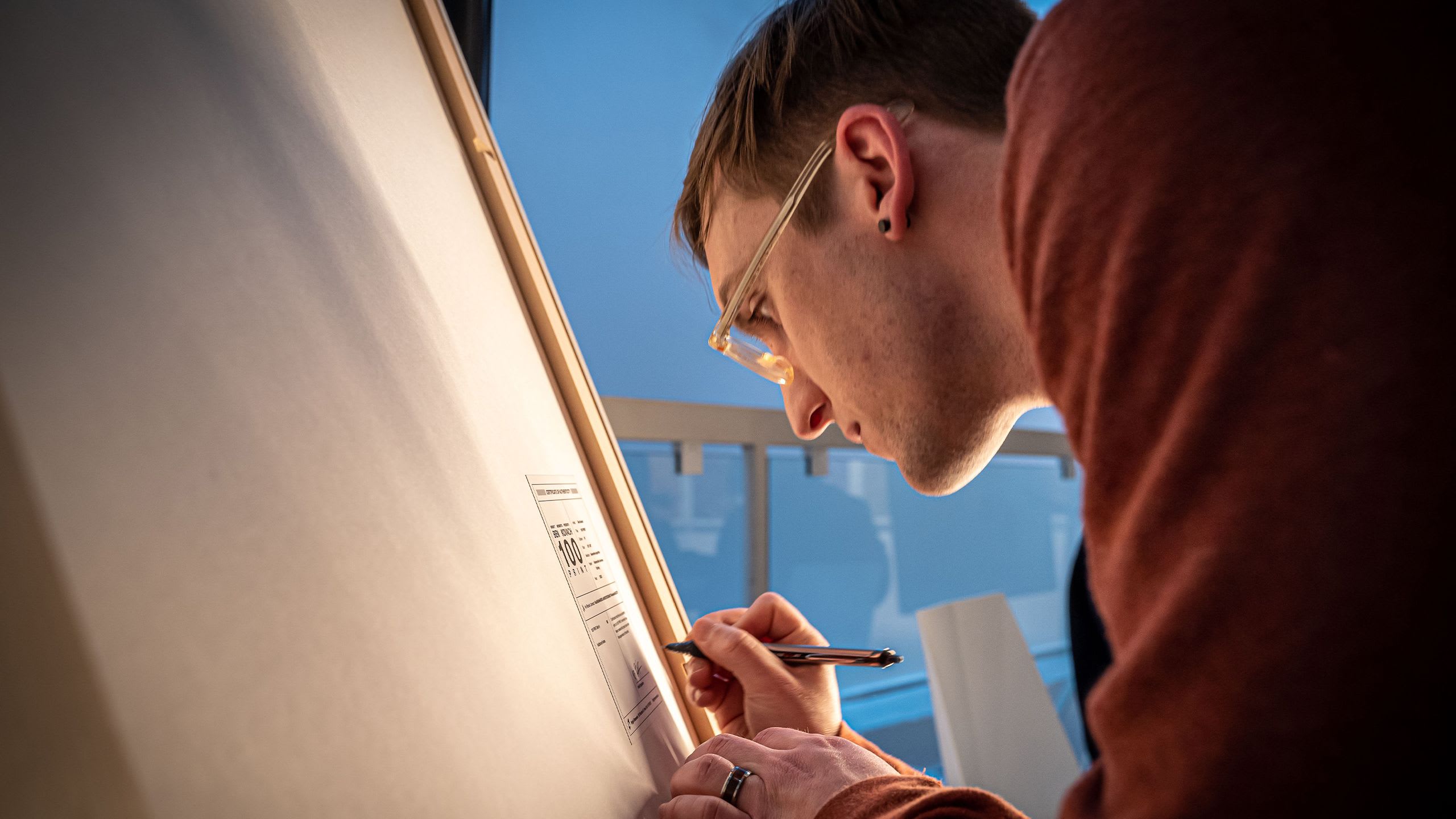NEWS
Code Generates Art ⇄ Art Generates Code
Code Generates Art ⇄ Art Generates Code
by Larva Labs
•
2 Oct 2025
Art Blocks is honored to present Quine by Larva Labs, the final Curated release in the historic Art Blocks 500 collection.
View the exhibition page here.
The 24-hour auction begins Thursday, October 9, 2025 at Noon EST.
Below, Matt Hall and John Watkinson share their creative process and technical insights.
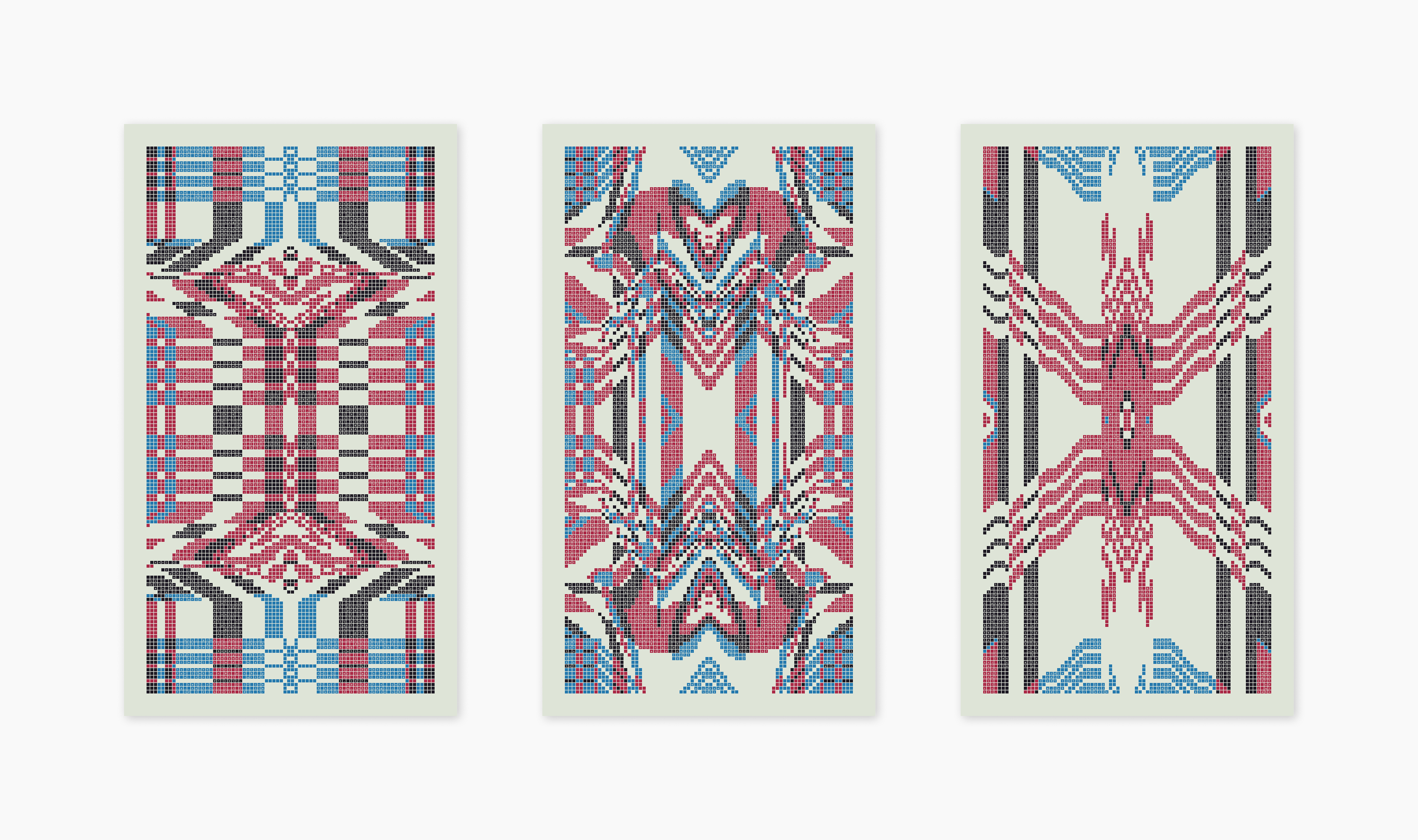
Quine – A computer program that produces a copy of its own source code as its output.
Motivation
As Art Blocks fans from the very beginning, we were incredibly honored when they asked us to create the final project of their storied Curated series. It might seem like a very natural thing for us to do a project like this given our history with generative art, and specifically the on-chain Autoglyphs. However, it was actually quite difficult for us to find the right kind of project that felt like it belonged in the Art Blocks tradition while still being in our wheelhouse as Larva Labs. This is because our motivation usually comes from trying to solve a product or technical problem, and often trying to see if we can make something compelling within challenging technical constraints. Art Blocks offers a very generalized platform that supports a wide variety of generative art. So when embarking on this project, we found ourselves staring at a blank canvas with nearly unlimited possibilities, which was not a comfortable feeling for us!
To conclude the Curated series, we wanted our project to highlight and celebrate the fact that all of the artworks were created with code, and that all this code was freely accessible for anybody to read and learn from. However, most people who interact with Art Blocks projects don’t ever see the code that generates them. This led us to thinking about how we could highlight code directly in the artwork, rather than it being hidden out of view. It would be even better if this code was “alive” in some way, and not just decoration. And then that sparked the idea of creating quines.
Quines
A quine is a sort of programmatic “strange loop”, where the code that makes up a quine computer program generates output that is… the code itself! This is a beloved concept in the computer science community, and is linked with a lot of the most fascinating math and logic advancements in the 20th century, including Godel’s Incompleteness Theorem. It is also closely analogous to how biological life reproduces itself: the DNA in the living cell is a type of program that can produce all the mechanisms of life as well as make a copy of itself when reproducing. A good reference for quines is here:
https://www.edge.org/response-detail/27091
We wondered if we could extend the quine concept just a bit to generate an artwork that contained some text, and that text could be the code that generated the artwork. This immediately felt right for us, because now we had a concept that appealed to our innate nerdiness, while simultaneously enforcing quite draconian limitations; the entirety of the code that generated the artwork had to fit into the artwork! It also had to somehow generate its own code listing.
The Generator: Source Code, Engines, and Liminality
Our generator that lives on Art Blocks doesn’t actually generate an image. Instead, it creates the source code for a new, unique little generator that will in turn be responsible for creating the images, and in which its own code will appear. The parent generator does this by selectively incorporating snippets of code for rendering, symmetry, color, and text layout based on the Quine’s attributes. The most important such snippet is the Quine’s engine. Each Quine is assigned one of the 5 available engines, which is the algorithm that lays out the colored cells and is the primary determinant in the Quine’s appearance.
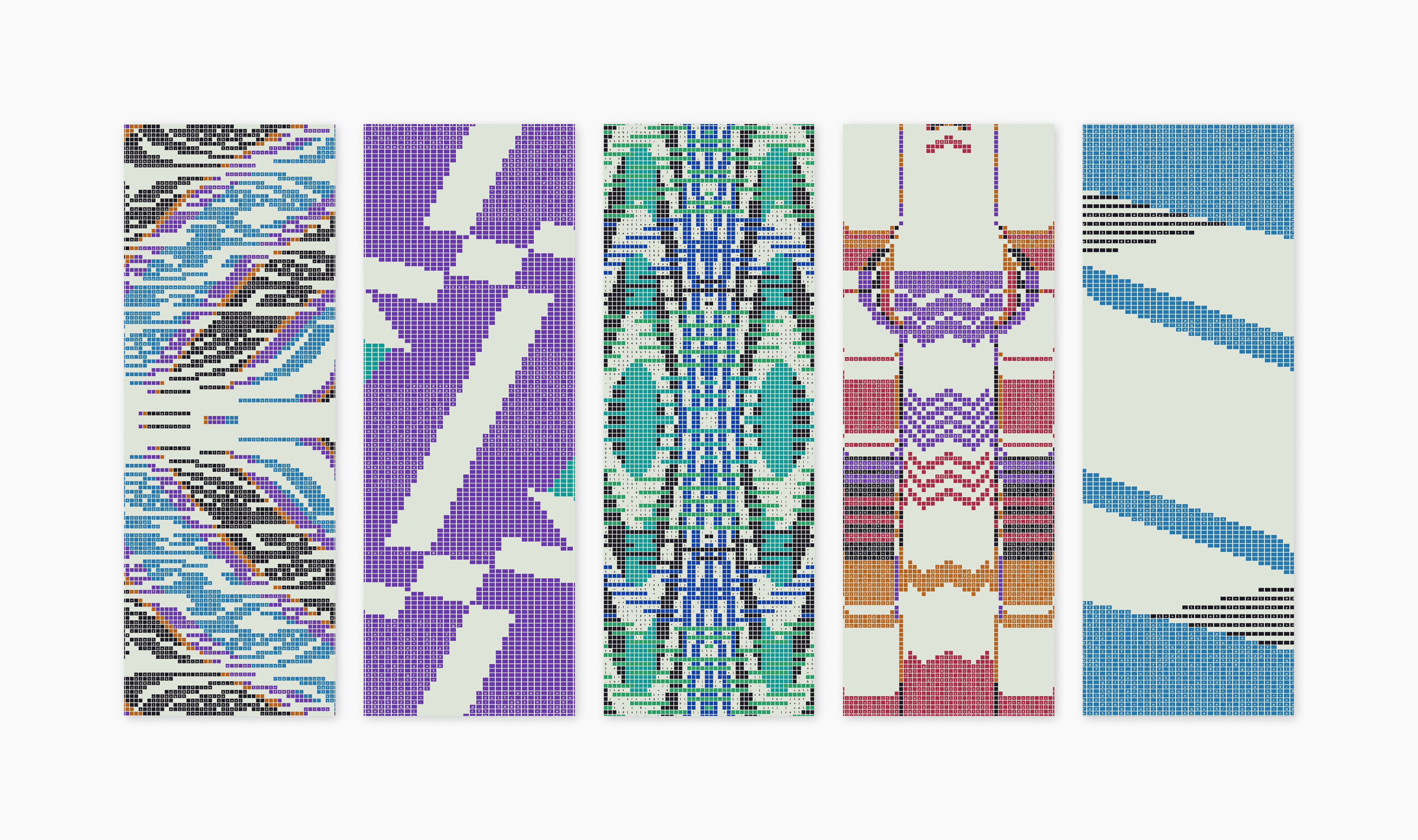
As each Quine contains its own source code, we wanted the visual presentation of Quines to essentially be a program listing. Computer code is nearly always viewed and edited with a fixed-width (monospace) font, so a program listing can be thought of as a two-dimensional grid of cells populated by letters, numbers, and symbols. We decided to make our Quines a 78x148 grid (inscribed within a 90x160 grid, but with 6 cells of margin on each side). This seemed like a good trade-off to achieve sufficient visual variety while still retaining legible code, and roughly matched the column width of a text editor a programmer would use. Each cell can either be colored or left blank. In most Quines, code can only appear in the colored cells. We call this code layout subliminal since it is embedded in the visual design itself. In a minority of Quines, the code instead only appears in the uncolored cells, which we call liminal.
Quinity and Post Params
It’s possible to generalize the concept of a quine to larger loops. So rather than a program outputting its own source code, it outputs a new program with different source code. But when that new program is run, the original source code reappears. This can be called a 2-Quine, since it takes two steps to loop back on itself. Similarly, 3-Quines, 4-Quines, and n-Quines can be created for any whole number n. Each Quine is minted with a Quinity trait that is either a Perfect-Quine if it is a loop of 1, or an n-Quine if it is a loop of length n. Each of the n Quine outputs look distinct from its other generations, but they also all look closely related to each other and express all the same traits.
We also generalized one step further to the concept of a Pseudo-Quine. This generates an essentially unlimited number of related output programs, but it never quite gets around to looping back on itself. There are only a very small number of Pseudo-Quines in the set.
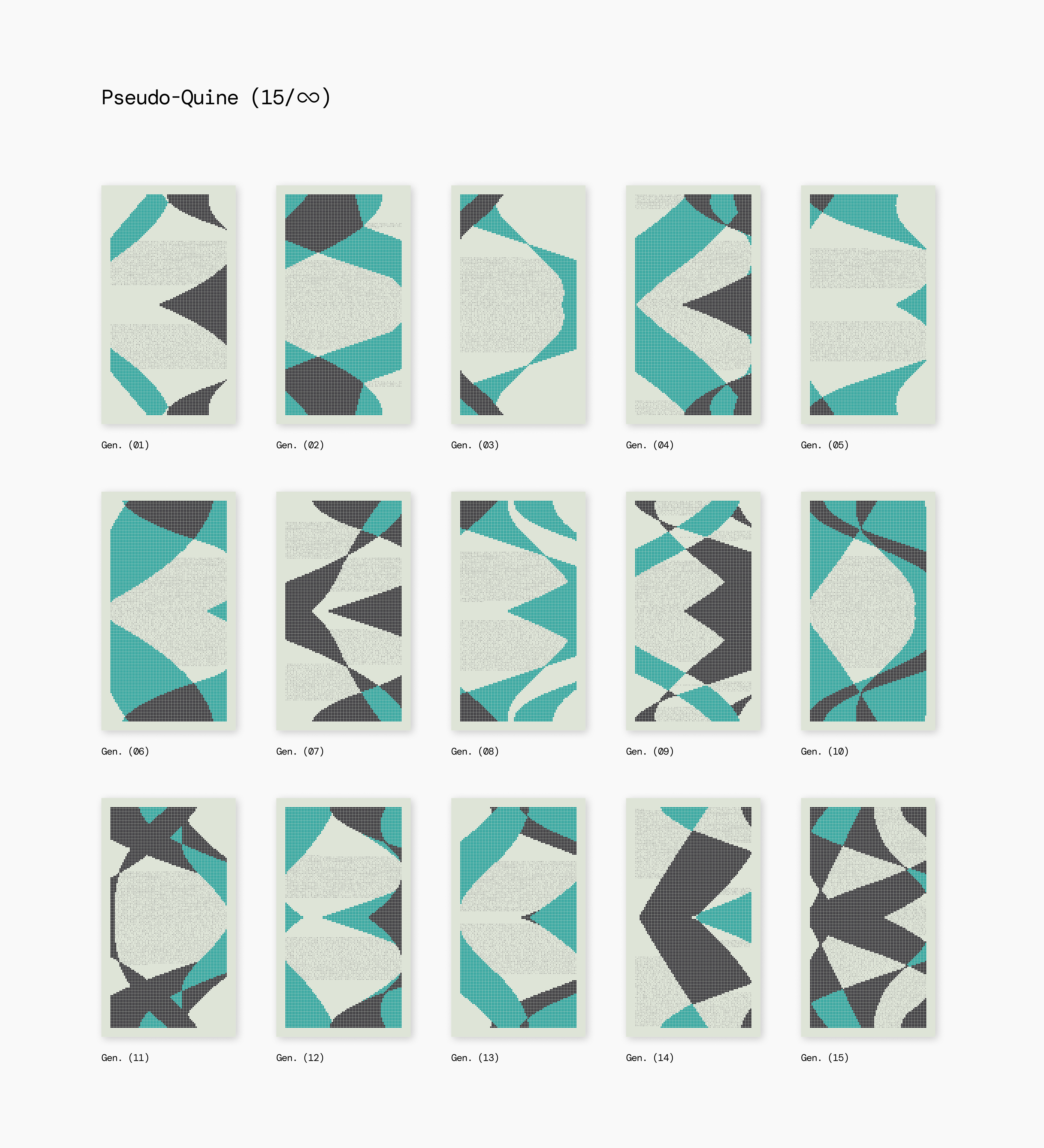
Art Blocks supports a technology called post params that allows a collector to submit a transaction that configures or modifies their generative token after minting. With Quines, we support the owner selecting which Quine generation to use as the “poster” for their Quine when it is viewed on the Art Blocks site, on marketplaces, or anywhere else that the Quine is displayed. So, if a Quine token is a 5-Quine, the owner can select which of the five generations they want viewers to see, and this can be changed subsequently whenever they like. We are curious to see what outputs collectors prefer, and how often they make changes to their Quine via post params.
The End of an Era
The Art Blocks Curated series represents an important moment in the history of digital art. It brought together the perfect mix of a new method of ownership, a distillation of the roles of algorithm and artist in generative work, and an incredible collection of artists and the collectors that support them. We are so honored and appreciative to be the final entry in this series.
Larva Labs
October 2, 2025
